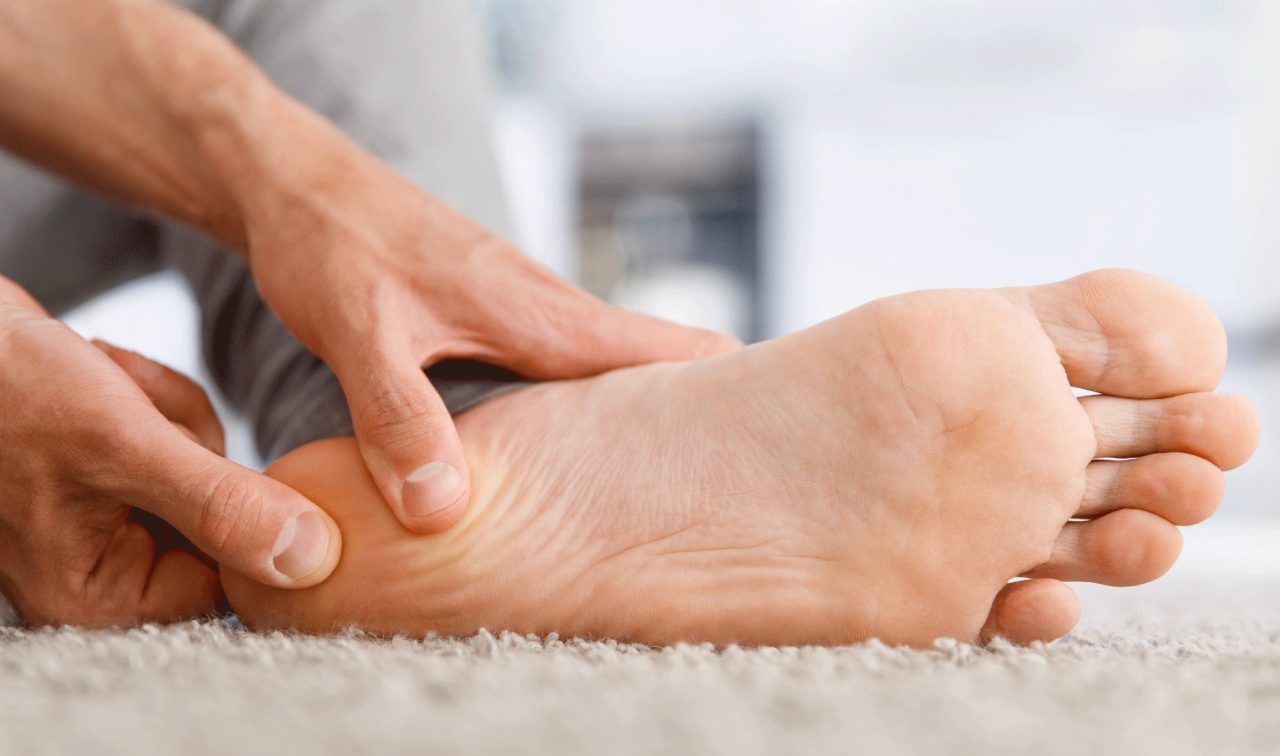What Is Plantar Fasciitis?

Foot pain caused by plantar fasciitis is more common if you are overweight, work on your feet, run, or wear high heels. Here's how you can manage it.
In the morning when you walk to the bathroom, do you get a stab of pain in your foot? That could be plantar fasciitis (pronounced PLAN-tur fas-e-I-tis). Don’t ignore it. Often, people change the way they walk to avoid the pain, which can lead to problems in their knees, hips, or back.
YOU MIGHT ALSO LIKE: Pain on Top of Foot
What is plantar fasciitis?
The plantar fascia is the band of tissue on the bottom of your foot, running from your heel bone to your toes. It supports your foot arch and absorbs shock when you move. When it becomes inflamed, it can cause stabs of pain when you walk. It might fade and return when you stand up after sitting, or if you stand a long time.
One sign: plantar fasciitis tends to be worse after, rather than during, exercise.
What are the risk factors for plantar fasciitis?
Often there’s no obvious cause for this pain. But it’s most likely to strike when you are between the ages of 40 and 60.
If you spend the workday on your feet, you may develop plantar fasciitis. Some activities, such as long distance running and dancing, put more stress on your feet. Being overweight is also a burden for your feet.
If you have flat feet, a high arch, or even an abnormal way of walking, you can stress the plantar fascia.
Wearing high heels — anything higher than two inches — consistently can cause your Achilles tendon to tighten and pull on your heel bone when you take your shoes off. Shoes like flip flops or ballet flats that don’t support your arch are also a risk factor.
How is plantar fasciitis treated?
You may recover in a few months if you ice the painful area, do stretches, wear supportive low-heeled shoes, and rest. Resting may mean you can’t stand on your feet on the job without breaks, and you may have to change your exercise routine. Over-the-counter pain relievers like ibuprofen and naproxen sodium can help. A physical therapist can teach you exercises that stretch that part of your foot and how to apply athletic tape before a workout or long periods of standing.
Other treatments methods include:
- You may benefit from wearing a splint at night to stretch out the tissue.
- You might need orthotics (arch supports) for your shoes.
- Steroid injections can relieve pain temporarily, but multiple shots could weaken the tissue. An injection of platelet-rich plasma from your blood can promote healing.
- In a procedure called extracorporeal shock weve therapy, sound waves are directed at the foot to stimulate healing.
- In an ultrasonic tissue repair procedure, your doctor will guide a thin probe into the damaged tissue, break it up, and suction it out.
- In severe cases, you may opt for surgery to detach the tissue from your heel bones.
How to manage plantar fasciitis
- Lose extra pounds. Being overweight burdens your feet.
- Wear shoes with no more than a two-inch heel, thick soles, good arch support, and extra cushioning. Don't wear worn-out sneakers, flip flops, ballet flats or high heels, or walk barefoot.
- Try swimming or bicycling instead of running, walking, or dancing.
- Apply a cloth-covered ice pack for 15 minutes several times a day
- Don’t stand on your feet too long for work.
- Massage the painful area.
It’s best to follow a program from a physical therapist, but until then try exercises that stretch your calves and the bottom of your feet. These include:
- While sitting in a chair with your knees bent, roll a marble around on the floor with your foot. You can also pick it up with your toes and put it in a bowl.
- From the same position, curl your toes around a small towel and pull it toward you.
- With your hands on a wall, bend one knee and place it in front of you and stretch out the other calf. Then switch sides.
Updated:
April 06, 2022
Reviewed By:
Janet O’Dell, RN